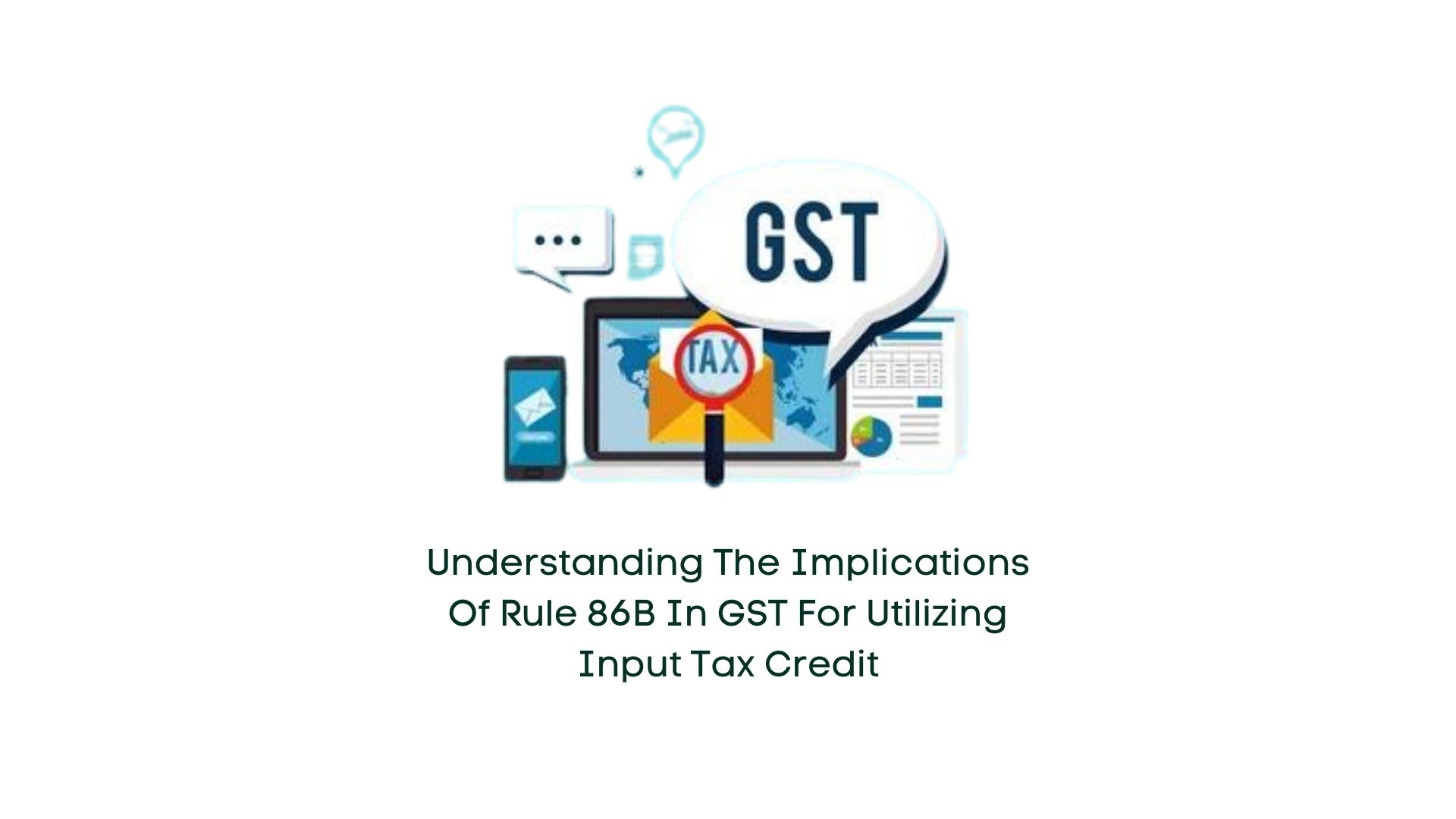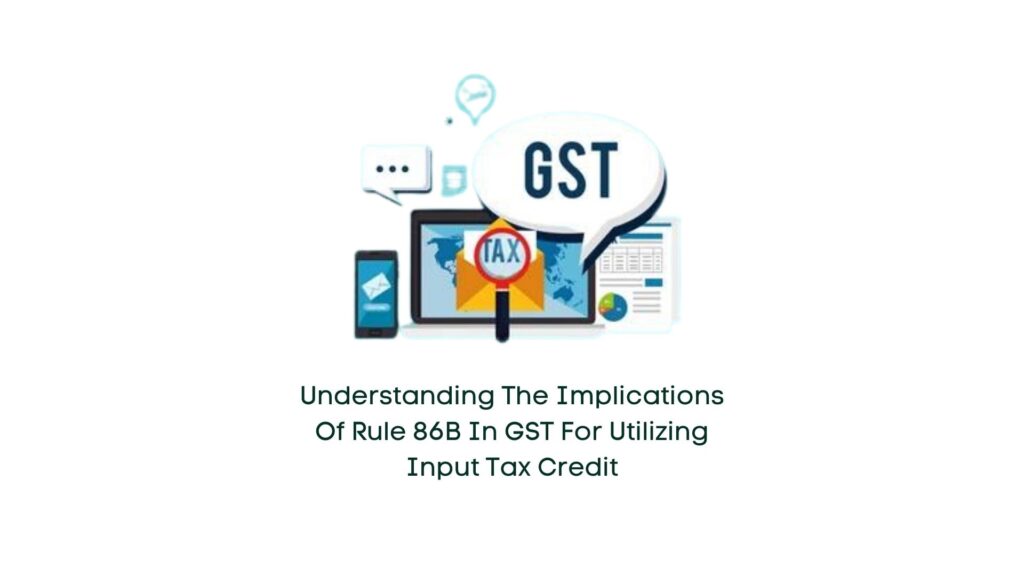
29 Feb Understanding the Implications of Rule 86B in GST for Utilizing Input Tax Credit

Introduction:
A recent development in the realm of GST, Rule 86B, was introduced by the Central Board of Indirect Taxes and Customs (CBIC) through notification number 94/2020 dated 22nd December 2020. It garnered attention within the business community. Effective from 1st January 2021, Rule 86B imposed restrictions on the utilization of Input Tax Credit (ITC) in the electronic credit ledger for discharging the output tax liability.
Previous ITC Utilization:
Prior to the implementation of Rule 86B, the utilization of ITC served as a pivotal mechanism in GST, aimed at mitigating the cascading effect of taxation. Various amendments were made regarding the order of ITC utilization for different tax components like CGST, SGST, and IGST. However, until the advent of Rule 86B, the entirety of ITC available in the electronic credit ledger could be utilized to offset the output tax liability.
Restrictions Imposed by Rule 86B:
Under Rule 86B, registered persons with taxable supplies (excluding exempt and zero-rated supplies) exceeding Rs. 50 lakh in a month face restrictions on ITC utilization. This rule supersedes other CGST Rules and mandates a thorough examination of the limit before each return filing.
The restriction imposed by Rule 86B stipulates that eligible registered persons cannot utilize ITC exceeding 99% of their output tax liability. In essence, more than 99% of the output tax liability cannot be settled using ITC.
Exceptions to the Rule:
Exceptions to this rule include instances where the registered person or relevant stakeholders have paid over Rs. 1 lakh as Income Tax under the Income Tax Act, 1961, or received refunds exceeding Rs. 1 lakh in the preceding financial year due to exports under Letter of Undertaking (LUT) or inverted tax structure. Additionally, if the taxpayer has discharged their output tax liability through electronic cash ledger for an amount exceeding 1% of the total output tax liability cumulatively in the current financial year, or belongs to specific entities like government departments or public sector undertakings, they are exempt from the restrictions.
Impact on Businesses and Working Capital:
The implementation of Rule 86B primarily targets large taxpayers, leaving micro and small businesses unaffected. Its core objective is to curb the proliferation of fake invoices and prevent the misuse of fake ITC for tax liability settlement, thereby deterring fraudulent practices aimed at inflating turnovers without genuine financial backing.
CBIC has provided clarity that the 1% limit is calculated based on the tax liability and turnover of the respective month. This rule signifies a strategic move towards enhancing compliance and integrity within the GST framework.


No Comments